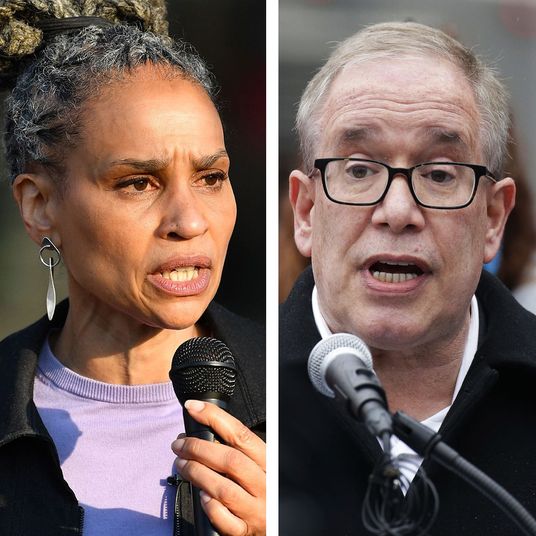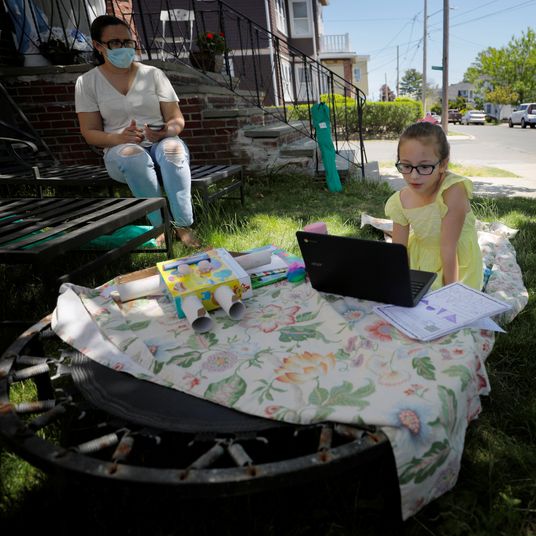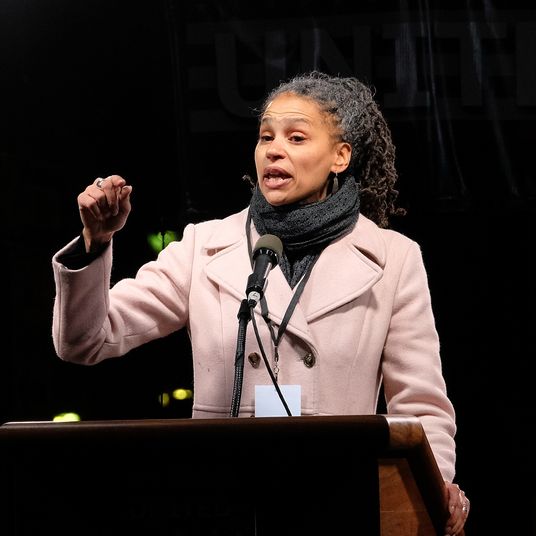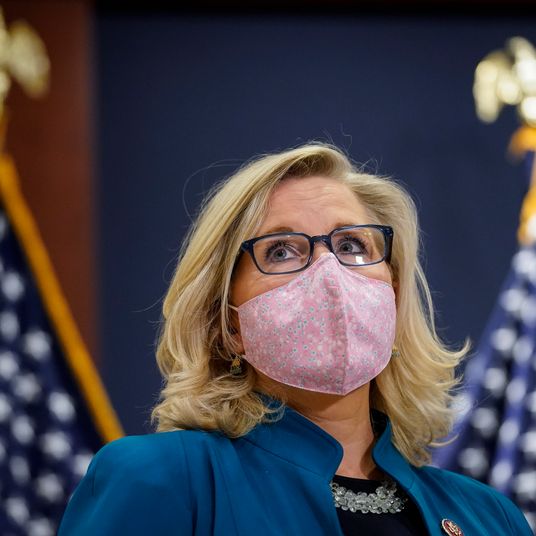
Kyrsten Sinema’s career trajectory is as odd as it is impressive. The Arizona Democrat began her life in politics as the kind of Naderite who decries capitalism as rule by “the Almighty Dollar,” and Ronald Reagan as an “Osama lover.” As an activist, Sinema didn’t just protest the war in Iraq but opposed the invasion of Afghanistan with such vehemence she once suggested she had no personal objection to an American traveling overseas to fight for the Taliban. Years later, as the self-proclaimed “most liberal member of the Arizona State Legislature,” she argued that it was “bullshit” for women who stay at home, “leeching off their husbands,” to identify as feminist. At a time when the Christian right was at the zenith of its cultural power, Sinema proudly identified as a bisexual atheist in a red state.
A little over a decade later, Sinema managed to overcome her record as a far-left edgelord — which had included multiple video recordings of her calling Arizona “crazy” in front of crowds of coastal liberals — as well as the stigma associated with her atheism and sexual orientation to defeat a female Air Force veteran in a 2018 Senate election, thereby becoming the first Democrat to represent Arizona in the upper chamber since 1995.
Sinema pulled off this improbable feat by, among other things, rebranding herself as the most moderate member of the Democratic House caucus. Still, some left-leaning Democrats held out hope that once Sinema was safely ensconced in the Senate, some of her old Green self would peek through the “Blue Dog” façade. After all, Sinema won’t have to face Arizona voters until 2024, at which point, demographic trends could plausibly erase the GOP’s advantage in the state. Even today, Arizona looks only a shade redder than Wisconsin — whose Democratic senator, Tammy Baldwin, just won reelection as a proud supporter of single payer and worker co-determination. Meanwhile, the Grand Canyon State is less pro-Trump than Ohio, where Sherrod Brown won reelection in 2018 as a labor liberal who feels no obligation to serve as a rubber stamp for Trump’s cabinet and judicial nominees.
But Sinema has charted a different course. Instead of emulating progressives like Brown and Baldwin from light-red states, she has named West Virginia’s Joe Manchin as her role model (a Democrat who answers to an electorate that went for Trump by 40 points). Sinema was one of only three Democrats to vote for Bill Barr’s confirmation as attorney general. When virtually every other Democrat voted “present” on the Green New Deal resolution, Sinema crossed party lines to register her opposition to the very concept of a pro-labor, climate-centric industrial policy. Earlier this month, she voted against restoring Obama-era regulations on coal pollution. In all of these cases, no Democratic senator from a remotely purple state voted as Sinema did. Montana’s Jon Tester, whose state backed Trump by 20 points in 2016, toed the party line on all of these votes.
Which is to say: Sinema has decided to err on the side of being needlessly reactionary. She doesn’t even plan to endorse her party’s nominee for Arizona’s other Senate seat in 2020 — and won’t commit to voting for a Democrat against Donald Trump next year, either. As Politico reports:
[W]ith her party fixated on beating both [Arizona Republican senator Martha] McSally and Trump in Arizona, Sinema’s endorsement or even guidance for candidates about how to win there could be key.
But that’s not something she’s interested in either. She even said it’s “premature” to commit to supporting her own party’s nominee at this point and indicated it could be months before she tunes in to a debate.
“Eventually, it would be wonderful to have a candidate that shares the values of the majority of Americans,” Sinema said cryptically. “Let’s winnow the field below, like, 20 or something, and then maybe it gets easier. Like, when it’s enough for two basketball teams, it’s too much.”
Sinema’s decision to position herself well to Tester’s right could have grave implications for the progressive agenda in 2021 and beyond. The average state is much more conservative than the U.S. as a whole (Trump won 30 states in 2016). This means, under the existing partisan alignment, the Senate has a large right-wing bias. There is simply no way for Democrats to assemble a bare majority for progressive legislation in the upper chamber if its purple-state Senators vote like Manchin. And Sinema is adamantly opposed to allowing her party to govern with a bare majority anyway. In her interview with Politico, she promises not merely to oppose the abolition of the legislative filibuster but to push for reinstating a 60-vote threshold for presidential appointments, a rule that would effectively bar the next Democratic president from assembling a liberal cabinet.
Democrats’ odds of retaking the Senate in next year’s elections have improved in recent weeks. But the odds of that majority passing Joe Biden’s most ambitious proposals – let alone, Elizabeth Warren’s or Bernie Sanders’s — looks vanishingly slim. This does not mean the Democratic presidential primary lacks real policy stakes; a lot of policy can be made through unilateral executive action. But for the moment, the Senate looks like it will be an insurmountable obstacle to the progressive legislative agenda in 2021. And as long as swing-state senators vote like Sinema, it’s likely to remain such an obstacle for a long time after.
All this said, there’s little reason to think Sinema’s current support for Big Coal and Bill Barr is any less negotiable than her past support for socialism and Ralph Nader. If Warren turns Arizona solid blue next year, it’s plausible that Sinema will (once again) change her colors.









